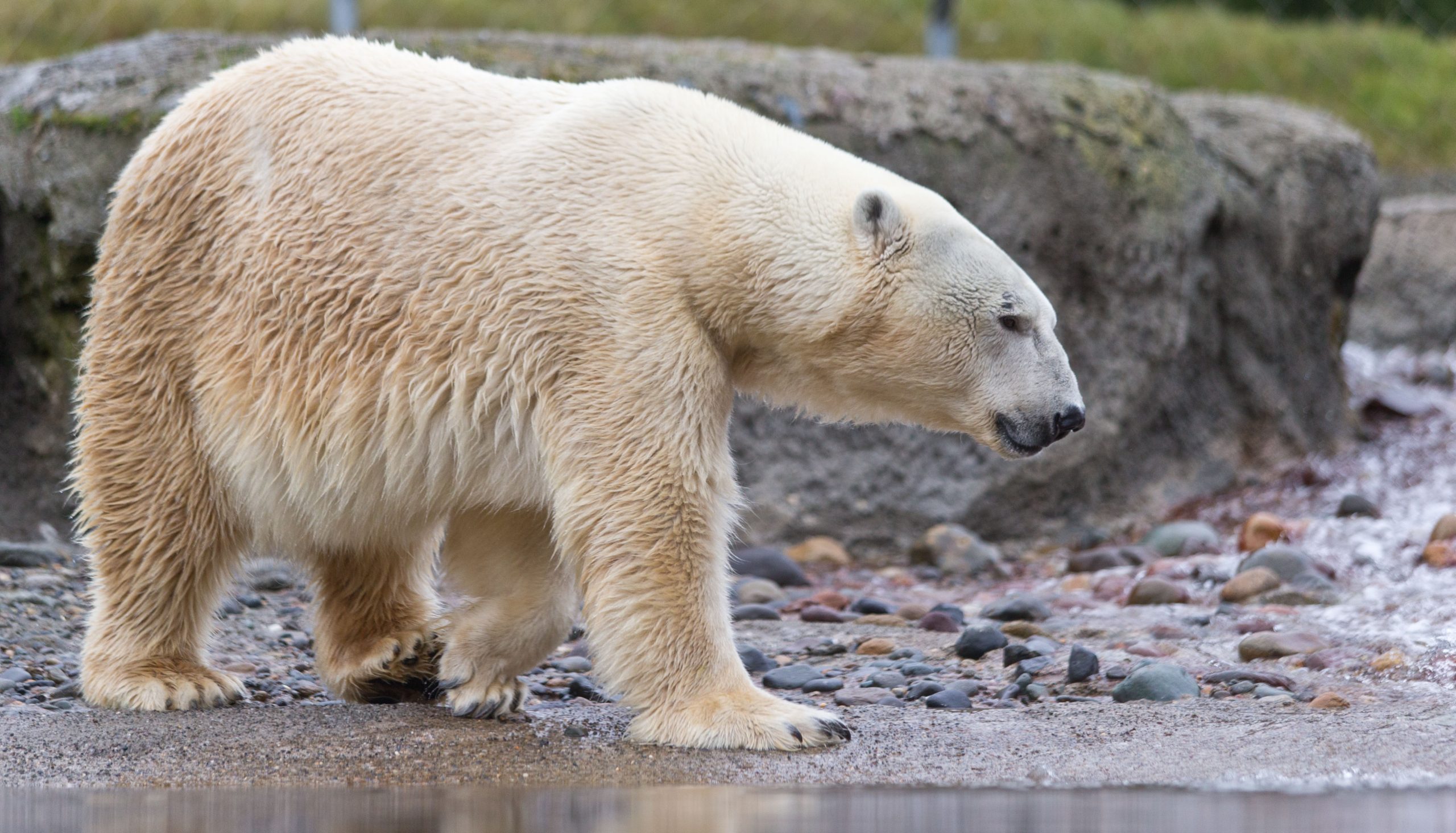
Polar bear researchers gather blood, fat, and hair samples to analyze bear nutrition, contaminants and other environmental factors during the short annual spring field season when bears are accessible on or near land. Hair samples can provide especially important information on how diminishing sea ice impacts bears since hair is grown when the extent of sea ice is at its lowest in the summer. This project will pilot test methods for measuring the rate and timing of polar bear hair growth, using PDZA bears. Findings will help researchers better understand the ecology and health of polar bears from wild samples.
Marine mammal whiskers are regularly collected by scientists to gain diet and health information, but techniques have not yet been validated with Pacific walrus. This study aims to determine the rate of growth of PDZA’s walrus whiskers and track hormone levels over a one-year period to determine whether this non-invasive technique can provide information to better understand walrus diet, health, and ecology in wild populations.
This ongoing research project is a collaborative effort among zoos to study walrus reproduction to improve breeding management. Objectives of the study conducted by Senior Staff Biologist Lisa Triggs include monitoring male and female hormones, monitoring sperm production, monitoring female reproductive organ anatomy through ultrasound, and preservation of semen samples.
There are currently ~230 red wolves in the zoo-based population, with fewer than 40 wolves estimated in the wild. Advancements in assisted reproductive technologies, such as in vitro fertilization, are critically needed tools to manage these populations for the survival of the species. This project will bank sperm from genetically valuable male red wolves and test techniques to enhance sperm survival for in vitro fertilization.
PDZA works with the National Zoo and Nashville Zoo to collaborate with the Khao Kheow Open Zoo in Thailand to facilitate the management, study, and breeding of clouded leopards. To date 78 cubs have been born in Thailand, with ten imported to the U.S. Current project goals include: continue successful reproduction in the Thai and North American populations, enhance scientific and assisted reproduction studies of clouded leopards, further transition operation of the program to Thai staff, and develop a new, 5 year Strategic Plan.
Successful breeding of clouded leopards over the past decade has resulted in several pairs producing sufficient offspring to contribute to the genetic diversity of the SSP population. These pairs now serve as non-breeding, exhibit animals and currently need to be separated to avoid breeding while females are in estrus. The project will determine if contraceptive implants can successfully suppress the female reproductive cycle, are easily removed, and if females return to normal reproductive cycling. If so, these implants could provide a reversible management option for preventing pregnancy, allowing pairs to remain together year-round.
This study will examine gas bubble disease that occurs in rockfish, forming gas pockets within the eye and surrounding tissues. PDZA veterinarians will use computed tomography (CT) scans of rockfish to precisely define the location of the gas within the eye and extraocular tissues. Additionally, affected fish will undergo therapy using a recompression chamber constructed with grant funds.
Ongoing support from PDZA supports Conservation Response Units in Sumatra to address conflicts between people and wild elephants. Formerly neglected elephants are trained to carry forest rangers into elephant territory to fight crime, rescue wildlife, reduce elephant-human conflict by herding wild elephants away from settlements and provide education and outreach programs to villages in and around the parks. This year a fourth operations base will be built to expand the reach of patrols.
A previous grant funded an outreach program by the Alliance for Tompotika Conservation about anoa and babirusa and the importance of protecting forests in 38 villages in Sulawesi. After the programs were completed, village leaders requested billboards to remind residents of the protected status of these species, and to reach residents who did not attend the outreach events. This grant will provide for the design and installation of a series of three billboards related to this outreach campaign to reinforce the information presented. Billboards are a proven effective medium for outreach in these rural areas. As predicted by villagers themselves, this will greatly strengthen the effect of the outreach program, leading to reduced illegal logging and poaching, and greater law enforcement.
The Endangered Wolf Center in collaboration with the Conservation Centers for Species Survival (C2S2) will create a 10-15 minute film by a National Geographic film making team to create awareness of the critically endangered red wolf. The American Red Wolf Film will build on efforts to save this critically endangered species by focusing on the ground-breaking wildlife management and history of the red wolf program, while also addressing misconceptions surrounding the red wolf. It will be offered free to zoological/educational institutions, museums, NGO’s, and teachers to help create support for wolf recovery.
The federally endangered Oregon Spotted Frog (OSF) is the most at-risk amphibian in the Pacific Northwest. In western Washington, the OSF frequently loses its preferred aquatic habitat because of encroaching vegetation. This project supports the Washington Department of Fish and Wildlife’s efforts to restore OSF habitat by removing shrubs, trees, and reed canary grass from at least three acres of habitat, providing renewed areas for breeding and rearing.
Point Defiance Zoo & Aquarium (PDZA) awarded grants totaling $261,363 to 25 projects in 2018. These grants are allocated from the Dr. Holly Reed Wildlife Conservation Fund, which is administered by The Zoo Society. The Fund has awarded more than $2 million since 2002.
The Zoo Society works with PDZA to conserve wildlife and wild places at home and abroad. Donations from zoo guests, community members and other sources provide money for the fund, which is named in honor of longtime PDZA head veterinarian Dr. Holly Reed, who died in 2012.
5400 N Pearl St.
Tacoma, WA 98407
253-404-3651
society@thezoosociety.org
© Copyright 2023